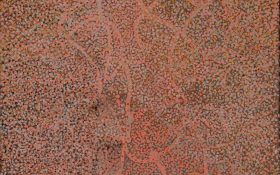Although during the Golden Age Hollywood was a town run by Jews, it has never been a town which supported its own by way of jobs and/or positive screen portrayals. As Columbia chief Harry Cohn so famously said, `Hollywood makes pictures by Jews and for Jews but `not` with Jews`.
Many an actress or actor of Jewish roots was rejected for someone of less talent and/or beauty simply because the other`s ancestry was Jewish. By the same token, many an actress or actor of Jewish origins was forced to change their name and/or identity to get hired and there are an awful lot of stories where the same person came back for the same job after making certain accommodations and got the job.
All of this brings me to the one-woman show running in the West End, A Conversation with Edith Head, written, directed and starring Susan Classen (a 60-year-old American actress from Arizona). Unlike I, Classen never met Head and has built the play around biogs, TV footage (reels of it) and interviews with Hollywood`s paramount female designer.
Thus whilst acknowledging Head`s achievements in raising the level of respect for designers within the industry, the portrayal is infamously anti-Jewish and presumptuously anti-gay.
Head, born Posener, like so many Hollywood Jews, was pressurized to conform so as to find work within an industry run by Jews but which was very restrictive toward Jews. The play actually acknowledges her conversion to Catholicism but fails to mention that it probably was this kinship which promoted director Alfred Hitchcock, a clannish Catholic, to intercede with Universal about getting her a job.
It was not for nothing that the third floor at MGM was called `the College of Cardinals`. It was so named because of those dreadful make-overs the studios forced you to accept that were very similar to but not exactly like the conversion rites when entering the Catholic Church.
Most of the studios had their own chapels on the lots and there is the apocryphal story about Alfred Hitchcock sending the AD to the Paramount chapel when they were filming Rear Window to get Grace Kelly back on the set.
Kelly, for all her pretensions, wasn`t a patch on supermodel, Suzy Parker, whom Hitch should have used and probably would have used had she not been such a vocal agnostic and anti-fundamentalist.
L.B. Mayer, who flirted with conversion but never actually took the step, used to repair to the MGM chapel whenever Jeanette MacDonald was starting a new film; and it was the actress herself who urged him to join her in supplication.
Despite the assimilation and conversion there was and is the tendency to place Head within the role of voyeur, outsider and predator who because of her low self-esteem, not to mention unsightly looks, jumped on almost every studio actress whom she fit.
The truth is, and this applies not only to Edith Head, but to other industry minions such as Betty Asher, Judy Garland`s publicist who (allegedly) commited suicide because of some scandal surrounding Garland herself, that it takes a pretty stable person to put up with the whims, fancies not to mention self-obsessions and possibly even nymphomania of many women within the entertainment business.
I know that when I began interviewing film stars in the late Sixties, I was a novice. I didn`t even know what a `nympho` was and Alfred Hitchcock, in our famous 1972 interview, had to educate me with regard to what women did in the Parisian brothels that he visited during the inter-war years.
In due course I interviewed a number of `nymphos` and have lived to tell the tales.
But it is only due to my very good nature and probably that of Edith Head that we don`t go firing our mouths off.
That said, it hurts a bit when the shoe is shoved onto the other foot.
`I wish I had fit Marilyn Monroe`, muses Head via Classen.
`Ouch!!!!




